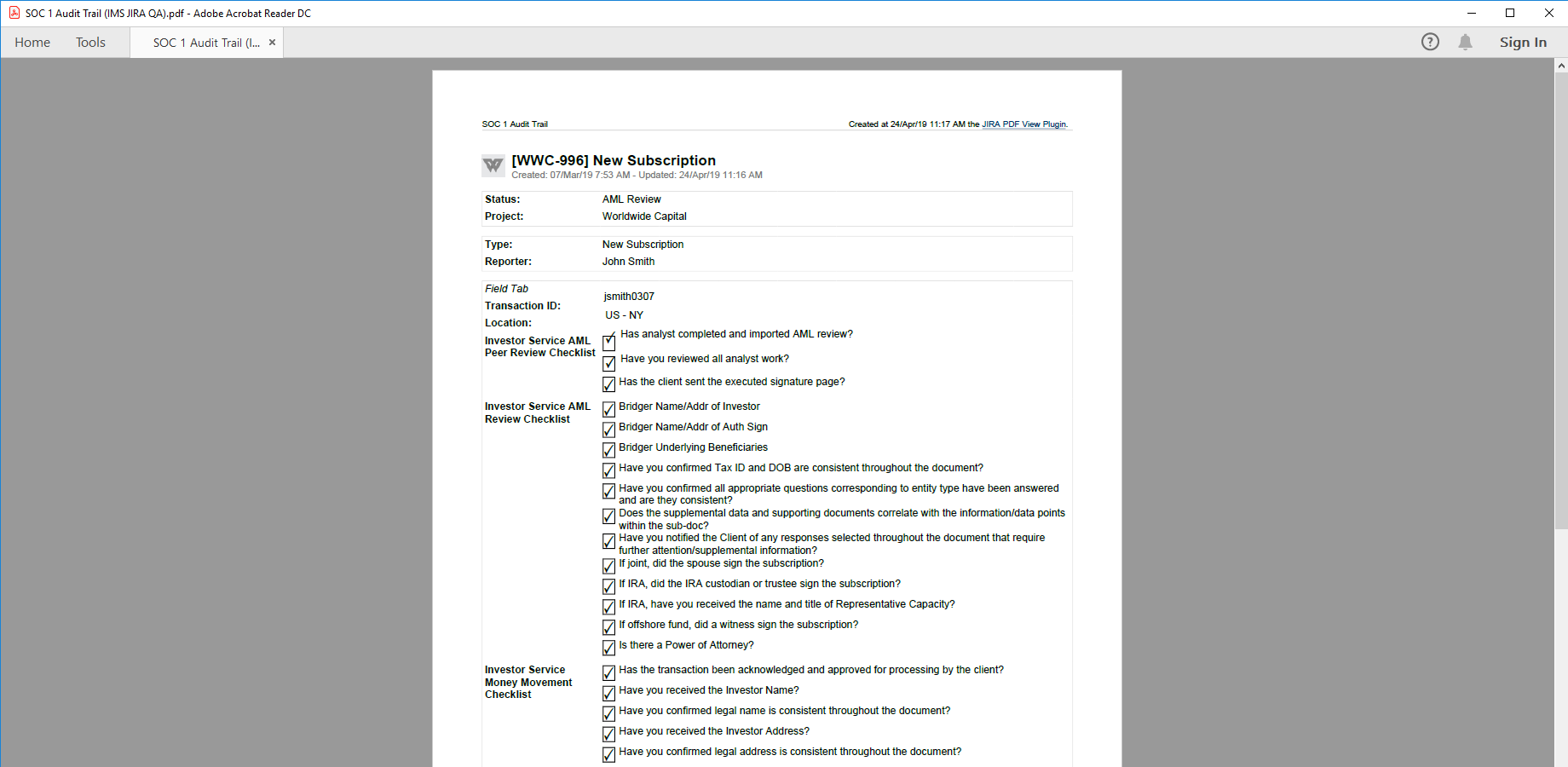Matt works for this huge financial services company, headquartered on the east coast of the United States. His company is a global provider of investment processing, management, and operations solutions.
They play in the big league, as they manage a combined $809 billion for about 8,900 clients, including banks, trust institutions, corporations, hedge fund managers. They use Jira to manage the different financial services workflows across several operational groups: Private Equity, Investor Services, Mutual Fund, Institutional and Hedge Fund.
Being a financial services company also means being strictly regulated by the government, and having to be able to present auditors whatever information is requested. To meet the requirements by the auditors and industry regulations, they periodically create custom reports from Jira issues.
To be compliant, but to also create a transparent internal workflow of what's being reported, Matt and his team needed a way to precisely control what Jira data to include in their custom audit reports. They also have to be sure that they present the information in a format that external stakeholders can access.
"Actually, we face three business problems when it comes to present Jira data to external stakeholders" - says Matt. These are:
- Audit Reporting
- Client SLA and Operational Reporting
- Archiving Jira issues and metadata
1. Building and presenting custom PDF reports for audits
Matt's company has more than 3,000 employees, and they use Jira in several of their departments to go about their daily work.
One of the regulations they need to comply with, is SOC1, Service Organization Control Type 1. This report is a written documentation of the internal controls that are likely to be relevant to an audit of a customer's financial statements.
A custom audit report exported from Jira to PDF with Better PDF Exporter for Jira
"In order to meet SOC1 compliance regulations, we are required to provide auditors with a complete record of all transactions." - explains Matt. "We also need to control precisely what data is provided to auditors.
To solve this problem, we use the Better PDF Exporter for Jira app to generate custom PDF audit reports."
2. Sharing custom reports internally and with clients
It's not only the auditors that require Matt and his team to report on their activities. Clients are equally demanding. Fellow colleagues or management also need to be informed about workflow progress or results.
"We work hard to uphold our Client SLA and also have a duty for operational reporting." - clarifies Matt. "Our private equity clients require monthly reports on all deliverables and SLAs, like how many transactions were processed per month or how many were rejected, how many were on-time, etc. We've used Better PDF Exporter to build these custom operational reports from our Jira issues. It has also helped us to (relatively) easily customize reports on a per clients basis."
3. Take the weight off the system by archiving Jira data
The Mutual Fund team at Matt's company generates nearly 1,000 Jira issues daily. After an issue has been resolved, it no longer needs to be stored in Jira, but it does need to be stored for seven years for tax and audit purposes.
"Our solution for this is to create a custom PDF report, which includes an exhaustive list of all information on the Jira issues, including comments, attachments, change history and other metadata. Then we store that PDF in Alfresco, a popular Document Management System." - says Matt.
Their approach is very effective and lately, it's getting popular among Jira users. Especially enterprise customers prefer this Jira archiving technique because the PDF format keeps all the issue data searchable, so it's still valuable for the team.
"The archived Jira issues don't erode the performance, as we finally delete them from Jira. We currently have nearly a million issues that we need to archive." - adds Matt.
5 years, 1 million issues, zero problems
Having a customizable PDF reporting app created value for Matt's team on several levels.
"If you aim to provide supreme customer support, it better be personalized. For us, it means that we can customize the PDF templates per business requirements. We have complete control over what Jira data is getting exported, and we can also tailor the output (the PDF layout and look and feel) to our customers' exact needs."
Matt is responsible for building the PDF templates and making sure the right templates are available for the right teams. But he is not the only one using the app. "Better PDF Exporter is integrated into the Jira user interface so that end-users can run the reports. That self-serve approach makes us more effective in creating reports. Also, the use of open technology for customizing templates - Velocity - is helpful as developers often have prior experience with it."
Matt and his team have used Better PDF Exporter for Jira heavily for more than 5 years and never had any issue with it. "There haven't been any custom formatting requests that we haven't been able to implement. Also, Midori has been a very responsive and helpful vendor to work with."
Conclusion
This is just one example of the growing number of companies that realize that custom reporting from Jira is easier then they thought.
If you look around, you find every component: your Jira instance, a highly customizable PDF exporting app and a vast network of Atlassian Solution Partners, to help you implement your custom Jira reporting system.

